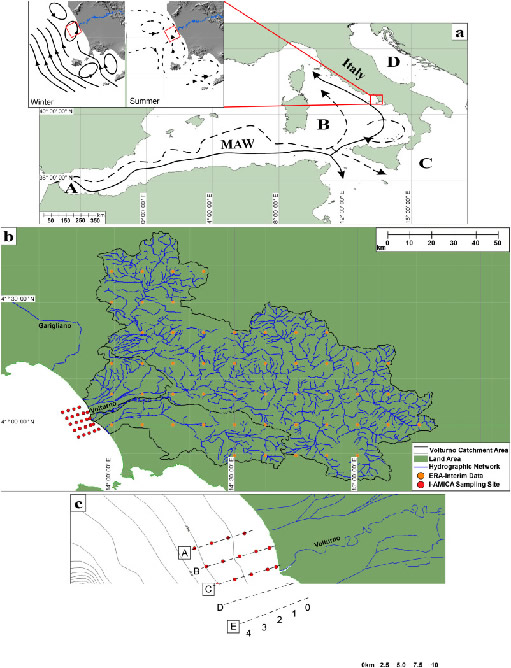Living and thanatocoenosis coccolithophore communities in a neritic area of the central Tyrrhenian Sea

Bonomo S., A. Cascella, I. Alberico, F. Lirer, M. Vallefuoco, E. Marsella, L. Ferraro (2018).
Marine Micropaleontology, 142, 67-91, https://doi.org/10.1016/j.marmicro.2018.06.003.
Abstract
The analyses of water and sediment samples, collected at 24 marine stations in a coastal area (Gulf of Gaeta, central Tyrrhenian Sea) during a three year survey (2012–2014), have improved our knowledge of coccolithophore ecology in the Mediterranean neritic domain. A comparison between the results and the oceanographic data has highlighted the ecology of the considered groups, and quantified the relationship between the community structures and the environmental parameters. The coccosphere concentration measured in the Gulf of Gaeta is extremely variable over the sampling periods (min:64 l−1; max:2.4*105 l−1), and comparable with data from other Mediterranean sites. Placolith-bearing taxa are the dominant group of the living communities. The concentration and distribution of Emiliania huxleyi is controlled by the distance from the coast and the Volturno River runoff. The K-strategist taxa are an important component of the summer nannoplankton in the upper 15 m and in the sediment samples. These taxa are also related to summer oligotrophic warm waters and low turbidity as well. The opportunistic behaviour of Helicosphaera carteri is confirmed and is related to moderately elevated nutrient levels and also tolerance to low salinity and terrigenous input. Nevertheless, our findings raise some questions on the reliability of H. carteri as a low salinity proxy. Overall, the sediment assemblages reflect the composition and the temporal distribution of the living communities. The occurrence and distribution of abundant reworked coccoliths, both in water and sediments, provides useful information about coastal dynamics and confirm their use as a reliable runoff proxy.


Devi effettuare l'accesso per postare un commento.